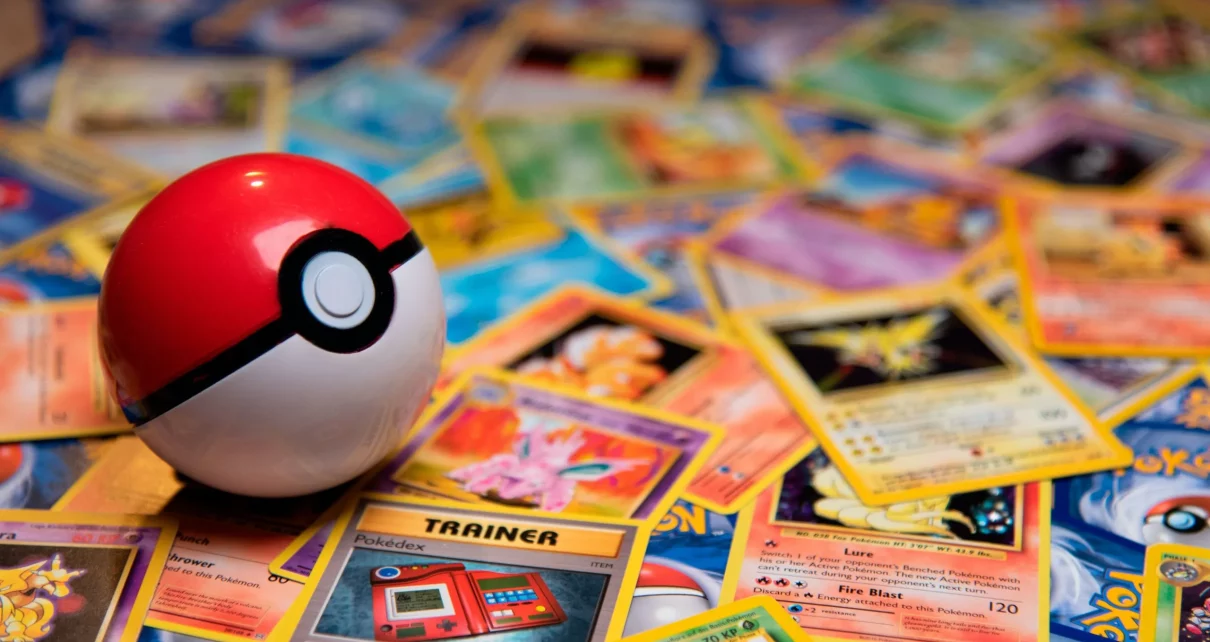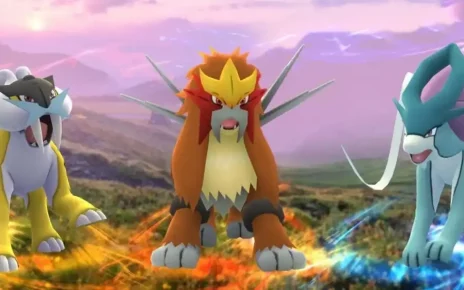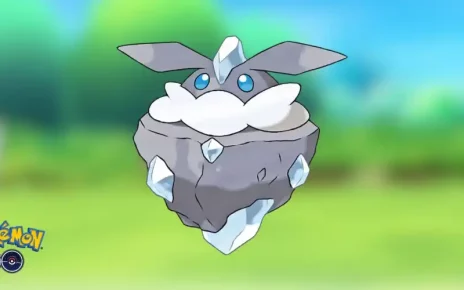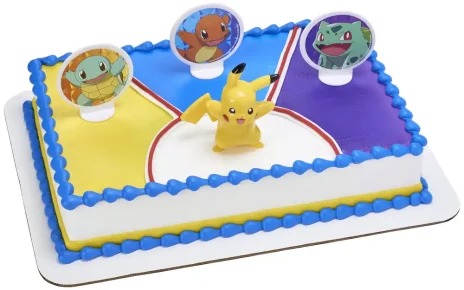If you’re a collector of Pokemon cards, you may be interested in grading them to determine their condition and value. Here’s a guide to grading Pokemon cards, including why it matters, the basics of grading, understanding the grading scale, choosing a grading company, the grading process, interpreting grading results, and frequently asked questions.
Introduction to Pokemon Cards Grading
Pokemon card grading is the process of evaluating the condition of a card and assigning it a grade based on its quality. Grading can help collectors determine the value of their cards and ensure that they are getting a fair price when buying or selling.
Why Grading Matters
Grading matters because it can significantly affect the value of a card. A card that is in excellent condition and has a high grade will be worth more than a card that is in poor condition and has a low grade. Grading can also help collectors identify counterfeit cards and ensure that they are buying authentic cards.
The Basics of Pokemon Cards Grading
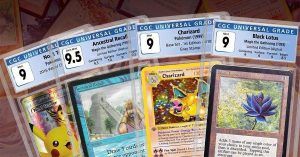
The basics of Pokemon card grading include evaluating the card’s centering, corners, edges, and surface. Each of these factors is graded on a scale of 1 to 10, with 10 being the best possible grade.
Centering
Centering refers to the alignment of the card’s image and borders. A card with perfect centering will have an equal amount of border on all sides. Off-centering can significantly affect a card’s grade.
Corners
Corners refer to the condition of the card’s corners. A card with sharp corners will have a higher grade than a card with rounded or damaged corners.
Edges
Edges refer to the condition of the card’s edges. A card with smooth edges will have a higher grade than a card with rough or damaged edges.
Surface
Surface refers to the condition of the card’s surface. A card with a clean surface, free of scratches, scuffs, or other damage, will have a higher grade than a card with surface damage.
Understanding the Grading Scale
The grading scale for Pokemon cards ranges from 1 to 10, with 10 being the best possible grade. Cards that receive a grade of 9 or 10 are considered to be in excellent condition, while cards that receive a grade of 1 or 2 are considered to be in poor condition.
Choosing a Grading Company
There are several grading companies that specialize in grading Pokemon cards, including PSA, Beckett Grading Services, and CGC. Each company has its own grading standards and fees, so it’s important to research each one before choosing a company to grade your cards.
PSA Grading
PSA is one of the most well-known grading companies and is known for its strict grading standards. PSA grades cards on a scale of 1 to 10 and charges a fee based on the declared value of the card.
Beckett Grading Services
Beckett Grading Services is another popular grading company that grades cards on a scale of 1 to 10. Beckett charges a flat fee for grading and offers a variety of grading services, including standard grading, subgrades, and autograph authentication.
CGC Grading
CGC is a newer grading company that specializes in grading comic books, but also grades Pokemon cards. CGC grades cards on a scale of 1 to 10 and charges a flat fee for grading.
The Grading Process
The grading process involves preparing your card for grading, submitting your card to a grading company, and waiting for the results.
Preparing Your Card for Grading
Before submitting your card for grading, it’s important to ensure that it is in the best possible condition. This may involve cleaning the card, using a magnifying glass to inspect it for damage, and placing it in a protective sleeve.
Submitting Your Card
Once your card is ready, you can submit it to a grading company for evaluation. Each company has its own submission process, which may involve filling out a form, paying a fee, and shipping your card to the company.
Interpreting Grading Results
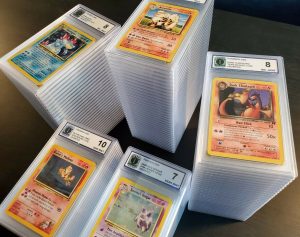
Once your card has been graded, you will receive a report that includes the card’s grade and a detailed description of its condition. It’s important to understand the grading scale and how it affects the value of your card.
Understanding the Grade
The grade of your card will determine its value. Cards that receive a grade of 9 or 10 are considered to be in excellent condition and will be worth more than cards that receive a lower grade.
Market Value and Graded Cards
Graded cards are generally worth more than ungraded cards, but the market value of a card can fluctuate based on supply and demand. It’s important to research the market value of your card before buying or selling.
Conclusion
Grading Pokemon cards can help collectors determine the value of their cards and ensure that they are buying or selling authentic cards. By understanding the grading process and choosing a reputable grading company, collectors can ensure that their cards are accurately graded and valued.
FAQs
- Why should I grade my Pokemon cards?
Grading authenticates your cards, preserves them, and can potentially enhance their market value. - How long does the grading process typically take?
The duration can vary between different grading companies and can range from a few weeks to several months. - Is it worth grading lower-value cards?
It depends on the collector’s intent. For preserving and authenticating, yes. For investment purposes, it’s usually recommended to grade higher-value cards. - Can I grade a Pokemon card myself?
While you can assess a card’s condition to some extent, professional grading companies use precise tools and expertise to assign an official grade. - How does grading affect the value of a Pokemon card?
A higher grade often correlates with a higher market value, especially for rare and sought-after cards.
For more informative posts about anything and everything related to pokemon card, visit wolfpokemon.

